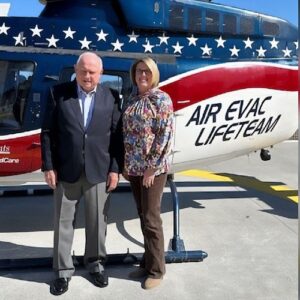Trauma centers are a type of specialty hospital that treats traumatic injuries. From car accidents to falls, trauma center specialists are prepared to treat various injuries. For around 40 million Americans, level I and level II trauma centers capable of treating the most severe of injuries are out of reach during the “Golden Hour.” This access is critical to better outcomes because time and level of care are so vitally important.
Emergency Departments are part of a hospital and treat a wide variety of illnesses and injuries. Sometimes Emergency Departments in rural areas function as “trauma ready” facilities – meaning they can stabilize but not routinely treat severe traumatic injuries like a Level I trauma center. Do you know how close access to the highest level of care you might need is?
Level I Trauma Centers
Aside from being designated as training centers for new doctors, level I trauma centers must be capable of quickly addressing the medical needs of trauma victims in critical condition. Access to a laboratory, radiology department that includes MRI and CT capabilities, specialists in a variety of medical fields, respiratory therapists, and a surgical suite to minimize the time needed to provide the right treatment to address the patient’s specific trauma. Because of their capabilities, Level I trauma center access leads to better outcomes after a traumatic injury. For rural residents, this might mean being transferred to a Level I trauma center for specialized care.
Level II Trauma Centers
Like a Level I center, Level II trauma centers can address a wide variety and severity of traumatic injuries. While they can still handle severe injuries and have experienced trauma surgeons on staff, they may still stabilize patients before transferring them to a Level I center if a specialist is not available for the patient’s specific needs.
Level III Trauma Centers
Level III trauma centers are smaller and often found in more rural areas yet still play a critical role in the care of trauma patients. They have the ability to provide immediate emergency care and perform surgery. They also focus on stabilizing patients with more severe injuries before transferring them to a higher-level center when needed. When access to a Level I or II trauma center is needed, the patient may be flown via air ambulance or transported by Critical Care Paramedics via ground ambulance. The transport time and medical stability of the patient, as well as the availability of critical care, play a role in determining the right type of transfer for the patient.
Level IV and V Trauma Centers – Trauma Ready Emergency Departments
Level IV and V Trauma Centers – Trauma Ready Emergency Departments
Many states do not recognize
Level IV or V trauma centers at all and may only designate an Emergency Department operating at these levels as “trauma-ready”. This means the staff is trained to recognize and respond to traumatic injuries but is not considered definitive care like a Level I or II trauma center.
Level IV trauma centers are generally found in rural areas and can provide advanced trauma life support before patients are transferred to a higher-level center. These centers are important for providing initial, stabilizing care, before transfer. While some more minor traumatic injuries can be treated at a Level III trauma center, oftentimes, the more severe traumatic injuries will be transported to a higher level of trauma care.
Because Level V centers are often rural and far from a Level I or II trauma center, patients are frequently transferred via air ambulance. Level V trauma centers provide initial evaluation, stabilization, and diagnosis of the injury and can prepare patients for transfer to higher-level centers.
Having rapid access to trauma care when needed is vital to improving patient outcomes. AirMedCare Network providers ensure rapid medical transport from the scene of an injury or transfer to a higher level of trauma care. Patients who are members of AirMedCare Network pay nothing out of pocket for this critical service so they can focus on recovery. Learn more about how our providers provide lifesaving care and access to trauma centers on our website at www.airmedcarenetwork.com.
Frequently Asked Questions:
If an AirMedCare Network Provider does not transport you, you will be responsible for payment. Our membership program only covers transports provided by our affiliates.
There is no limit to the number of transports a member may take in a year. Each transport is handled the same way and must be an emergent or time-sensitive transport as determined by a physician (or other appropriate provider) or first responder unaffiliated with AMCN.
With an AirMedCare Network membership, any person or persons who reside under one (residential) roof are covered. In the event we have a member who lives in a duplex or apartment complex, we designate the primary member’s residence/address— that is considered the “one roof”. Undergraduate college students can be covered under their parent’s membership as well as anyone previously residing in the household who is then moved to a permanent care facility.

The Importance of Air Ambulance Membership in Medical Emergencies
When it comes to medical emergencies, every second counts. Having access to air ambulance services can make a huge difference in a patient’s health outcome.

Understanding the Risks of Extreme Sports
Extreme sports offer an adrenaline rush and a sense of adventure that attracts millions of people. Understanding the risks associated with extreme sports is crucial

Flying with Chronic Illness
Traveling can be stressful, especially when flying. If you have heart disease, diabetes, or arthritis, it can make things even harder. But everyone deserves an




